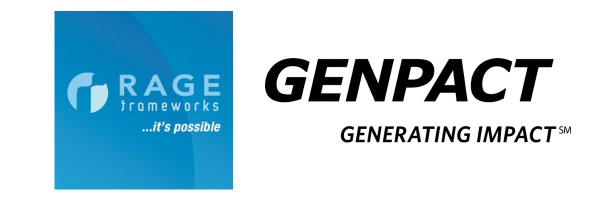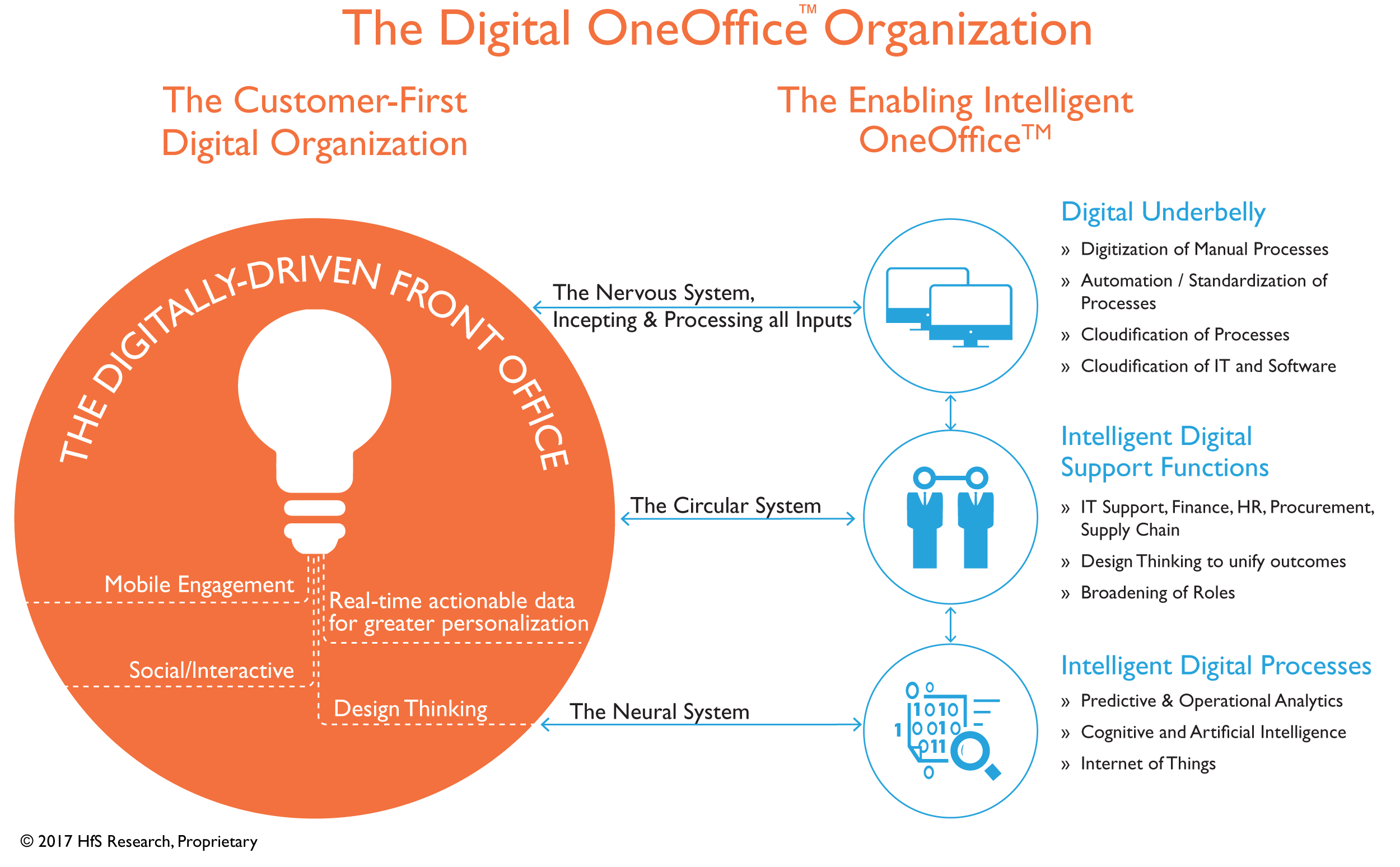While most of the services and operations industry obsesses with Robotic Process Automation to streamline its rudimentary back office processes, one provider that’s never shied away from making bold moves to disrupt illustrious competitors is Genpact, with an imaginative move to integrate true artificial intelligence with its business process service offerings by acquiring the impressive Boston-based Rage Frameworks.

It’s almost history repeating itself from a decade ago, when the (then privately held) Genpact turned the BPO model on its head with its disruptive virtual captive proposition that significantly challenged the pricing models and ability to integrate offshore capabilities into the old BPO model. Now, the firm is breaking the mold, yet again, by making real inroads into infusing AI into business processes and introducing these concepts to its huge global community of finance leaders.
Let’s get to the rub: RPA is all about digitizing the back office, but Artificial Intelligence is where we see the true marriage of business processes with clever technology and self-developing algorithms. We’ve danced for years trying to prophesize when BPO will truly integrate with IT, but we’ve now had reality unveiled: RPA platforms streamline the back office, while AI brings the middle and front together to create that true Digital OneOffice™ experience. The Digital OneOffice is not about collecting and archiving historical data simply to discover what went wrong, it’s about being able to predict when things will go wrong and devising smart strategies to get ahead of them. The Digital OneOffice is about embedding smart cognitive applications into process chains and workflows, it’s about learning from mistakes and new experiences along the way. This is the emerging “organization neural system”, where the needs of the customer can be intelligently supported by real-time, self-learning intelligent operations:
Why is this acquisition significant?
In a nascent market where stakeholders stumble through smoke and mirrors to make any sense of the many claims around Intelligent Automation, M&A is a clear indicator that the market is starting to mature. When in December 2016 ISG bought Alsbridge and CA acquired Automic, HfS suggested that Intelligent Automation was at an inflection point and that the focus on automation tools will shift toward the likes of Google, Amazon, and Facebook around deep learning and the integration of unstructured data. While we have not yet seen the Internet giants play their hand, Genpact’s acquisition of Rage Frameworks is underlining exactly these market dynamics. And this is the first time that a service provider is driving automation capabilities through M&A.
Rage Frameworks drives pre-built automation engines deep into unstructured territory
Whereas the broader market remains misguidedly focused on the intricacies of RPA, Rage’s focus is not on automating specific process steps, often on sub-process level, but on developing a broad ranging platform (RAGE Enterprise) for custom solutions with a deep vertical footprint. While RPA is largely focused on structured information, Rage will take Genpact deeper into integrating semi and unstructured data. Their development effort over the last two years to build enterprise applications for financial industry processes (wealth management, commercial loan processing and financial statement spreading) is shifting the focus from automation tools and capabilities to providing an end-to-end process leveraging a model driven business transformation platform.
In our view, the value proposition of Rage Frameworks is centred on leveraging Machine Learning and Natural Language Processing to build out highly vertical engines in Financial Services, Capital Markets, and Supply-Chain. The functionality of these engines ranges from managing business rules to real-time integrating content to data access and NLP all built around a process assembly engine. These engine building blocks can then be assembled for custom solutions that automate business processes or can be used as one of three pre-assembled financial services industry applications: LiveWealth, LiveCredit, and LiveSpread. In addition, broader capabilities including front desk automation, real-time intelligence, and pricing are transforming how commercial lending, policy underwriting, financial statement analysis, investment research, and multi-system reconciliation can be performed.
RAGE’s industry applications are a big part of the allure for Genpact, which has spent the last few years going deeper into its commercial banking and capital markets operations accounts with data and analytics solutions trying to solve the same client operational challenges as Rage. In our recent HfS Capital Markets Operations Blueprint, Genpact placed in the Winner’s Circle, with an HfS callout about its need to bring more technology enablement to capital markets. The service provider has examples of using emerging technologies such as machine learning, automation, dynamic data extraction, etc., in LOBs as retail banking. What Rage brings to the table for Genpact is a more strategic approach for impacting client operations through technology-led change.
Genpact continues to lead the automation discussion from the front
From Genpact’s perspective, the acquisition is reinforcing the perception of being a pioneer in Intelligent Automation. Having led the market with the first publicly announced partnerships with AutomationAnywhere, Exilant, and Automic around its Rapid Automation program, Rage Frameworks fits in well with Genpact’s holistic approach to automation. Within that context, Rage’ assets will further advance the integration of unstructured data: Genpact has invested heavily in analytics and big data with a dedicated research lab in Bangalore, India. They have developed a Data Engagement Platform using big data technologies, in order to be able to harness structured and unstructured data from multiple sources. Thus, its Lean Digital strategy is aligned with HfS OneOffice concept. But the company has to demonstrate that it is starting to link up back, middle and front-office.
The broader market will follow with accelerated M&A activity
Regulations and risk management requirements are forcing banks to rethink the way in which they capture, store, manage, and distribute the growing volumes of transactional and trade data. Structured data from multiple departments and asset classes are maintained in silos, and unstructured data present new challenges as well as opportunities for automation and analytics.
Despite the continuing noise around RPA, we believe the market will shift toward operational analytics and the broader notion of AI. Not only are the leading RPA tool providers expanding in that direction, but we expect the investment focus to progress toward Deep Learning, Neural Networks, and broad NLP capabilities. While it might sound trite, data really is becoming the new currency. But this currency needs to be integrated into delivery backbones on an industrial scale. Thus, service providers need to reinforce their efforts on service orchestration. We haven’t seen many proof points for a successful expansion into data-centric scenarios, but those deployments will be a clear demarcation between the leaders and the also-runs.
Central to this will be the articulation and delivery of business outcomes for specific industry functions through the use of operational analytics, RPA, BPO and AI. Can Genpact put together a financial spreading function by leveraging its operational expertise in BPO and RPA, the RAGE LiveSpread application and analytics interventions to deliver more efficient and effective credit risk management?
Bottom-line: Genpact is progressing toward True Digital OneOffice capabilities
Genpact’s announcement can be crystalized to its ambition of blending RPA in the back-office with AI in the middle-office, which is why the firm, still regarded by many as a “pureplay BPO” managed to break the top 10 in the recent Digital OneOffice Premier League, despite not dragging a multi-billion dollar IT services business around.
Thus, BPO is ever more changing to becoming technology-led. We expect that this strategy will be increasingly underpinned by neural networks and notions of self-remediation to enhance the Digital Underbelly and the Intelligent Digital Processes of the OneOffice concept. While Rage Frameworks is one of the superior suppliers across the Intelligent Automation Continuum, the more providers that are progressing toward the notion of AI, the more inflated the valuations for M&A will become. Against this background, valuations for RPA providers could look like peanuts very quickly. But then again, M&A is rarely rational in today’s foggy market.
Posted in : Business Process Outsourcing (BPO), Cognitive Computing, Finance and Accounting, intelligent-automation, Robotic Process Automation








Phil,
Very good insight here – do you think other BPO firms will follow suit and make similar acquisitions?
Jeff Small
Thanks Phil, this is a great investment for Genpact. Genpact always and would remain one of the best BPO in the world. Reason for success is it core work culture it has brought in from GE. Having stated this Genpact was never a strong hold with IT consulting or related transformation. It would be interesting to see how it uses RPA to gain in consulting it lags behind. It could first start with Ge internal business first. Hope other BPO leaders lead this as an example.
Great quote: “RPA is all about digitizing the back office, but Artificial Intelligence is where we see the true marriage of business processes with clever technology and self-developing algorithms”
Industry changing acquisition by Genpact. Phil Fersht’s analysis is spot on!
Deb
Excellent analysis. I like how you are positioning RPA and AI at the back and middle offices respectively – this is where I see these technologies evolving as the industry matures. It’ll be interesting to see if the RPA suppliers can make the move up the cognitive value chain,
Chris
@Jeff – good observation. I do see other providers eager to invest in AI and this will only increase the focus from some of them. Vishal Sikka at Infosys is very big on AI with his MANA investment, for example, while you have the likes of TCS (ignio) and Wipro (Holmes) also trying to build their own intelligent platforms. Then you have tech agnotic providers / consultants like Accenture and Deloitte increasingly working with the likes of IPSoft’s Amelia and IBM Watson.
My concern is the lack of “enterprise ready” AI platforms in the field worth considering – there will definitely be more springing up in the next couple of years. I expect there to be more activity in the medium term with solutions being built around Watson, tbh, and some ongoing investments from the Indian heritage firms in their homegrown platforms. Celaton is a small scale British firm which has appeal and may get acquired, but there are not too many more firms in this space right now that are as ready for M&A as RAGE…
PF
hi Phil
I am curious to understand more about your observations about deploying AI in BPO space and possibly the Remote Infra Management space. for example – In Support services- typically Validation of contracts before you accept a call or deploy a field engineer ( where a SD agent typically browses thru other systems, Excel sheet et. all) is a likely candidate for small deployments of AI. Small successes can prod one to explore more.. These go a little beyond RPA- is my notion.
Happy to hear from you..
Subbu